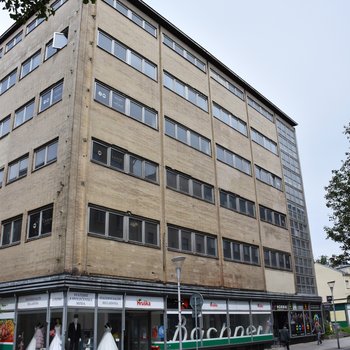He is described as a representative of a streamline modernism, which encompassed not only architecture but also vehicle construction and industrial design. It is often described on English-language websites as a form of Art Deco.
He designed impressive buildings in Europe until the Nazis gained power. He often produced quickly sketched designs that already anticipated the momentum of his architecture. In 1933, he was forced into exile and went to Great Britain, where many of his following projects were realised, as well as several buildings in Palestine.
From 1941 he lived in the USA. He was one of several German architects who designed the German Village for the US Army to test attacks and bombardments on German cities.
He died of cancer.
Sources




